Disclaimer: This page contains affiliate links. If you choose to make a purchase after clicking a link, I may receive compensation at no additional cost to you. Thank you for your support.
“My advice for a long and happy life? Love what you do – and always eat well!”
Chuck Williams, Williams Sonoma
I add Williams Sonoma cookbooks to my cookbook collection whenever I see them. They are reliable, trustworthy, and good. I like the recipes, the photos, and the way these books feel in my hand.
But I didn’t realize a person started the Williams Sonoma store brand as a brick-and-mortar shop. Meet Charles E. Williams, or, as he was commonly known, Chuck Williams — the founder of Williams Sonoma.
Table of Contents
- Who Was Chuck Williams of Williams Sonoma, Inc. Kitchen Stores?
- When Did Chuck Williams Open Williams Sonoma?
- Chuck Williams on Retiring
- Williams Sonoma Today
- Williams Sonoma Cookbook List Edited or Authored by Chuck Williams
- Single Titles
- The Williams-Sonoma Kitchen Library
- Williams-Sonoma Basics Collection
- Williams-Sonoma Lifestyles
- The Best of the Lifestyle Series
- Williams Sonoma Collection
- Authentic Recipes Celebrating the Foods of the World
- The Best of the Kitchen Library
- The Savoring Series
- Chuck Williams Collection
- Williams Sonoma Complete Cookbooks
- Taste Cookbooks
- Williams Sonoma Entertaining Cookbook Series
- New American Cooking Series
- Williams-Sonoma Essentials Series
- Biography about Chuck Williams
- Related Resources
Who Was Chuck Williams of Williams Sonoma, Inc. Kitchen Stores?
“If you love what you do, the world will fall in love with you.”
Chuck Williams
Charles Edward Williams, always known as Chuck, was born on October 2, 1915, in Jacksonville, Florida, to Charles and Marie (Shaw) Williams. He had an older sister, Maria.
Chuck’s childhood and teen years weren’t easy.
His parents were often absent, and his earliest memories were of his maternal grandmother, Leona Shaw, who had once owned a restaurant in Lima, Ohio. She taught him a lot about cooking — working without recipes or measures, making pies and mayonnaise, learning to trust his taste and his judgment — which provided a few happy memories from a hard childhood.
Chuck was 14 years old at the start of the Great Depression.
In Depression-era Florida, special occasions often meant deviled crab — an iconic regional dish made with fresh-caught crab. As a boy, Chuck would accompany his father and friends on fishing trips, where he was known to catch more crabs than the adults.
Chuck took gleeful pride in his ability to stand on the dock of the St. John’s river and watch for the telltale scuttle of crab claws, then drop his net precisely where he predicted the crustacean would go next. His quiet patience and observation turned out to be talents that would serve him well in the years to come.
Unfortunately, those happy moments wouldn’t last.
“Happiness was in short supply back then,” Chuck says. “My father’s auto-repair business tapered off and finally closed. Not finding work in North Florida, he decided that the family should pack up and move to California.”
In southern California, Chuck found farm jobs picking cherries, apricots, and, later in the season, almonds.
“Even though I was working for pennies, I liked being in the orchards,” he says. “I still remember standing on a ladder with sunshine and leafy branches all around — and the sweet taste of those cherries pulled right off the tree.”
Chuck’s mother and 18-year-old sister Marie also found jobs, but his father was still unable to find work. “My father felt he was a burden on us,” Chuck says. “He finally just left me, my mother and my sister to fend for ourselves. I saw him only once after that. Consequently, I grew up pretty fast.”
Divorce rates decreased during the Great Depression — people couldn’t afford it. Instead, like Chuck’s father, some men abandoned their families due to embarrassment or frustration, according to History. It’s believed that over two million Americans became traveling hobos (and this includes women and teens).
Things didn’t get better for the Williams. Chuck’s mother and sister moved to Palm Springs, California. He stayed behind to continue working for the date farm near Indio, California, attending high school in the morning and working in the afternoon.
His job was too important to leave. After all, there were about 2.36 workers for every one job in California. With so many people clamoring for jobs, wages fell. Migrants, for example, who earned 35 cents an hour in 1928, were reduced to a mere 14 cents per hour by 1933, according to Encyclopedia.com.
Unemployment in the Golden State reached a staggering 28 percent in 1932; two years later, one-fifth of all Californians were dependent upon public relief, shared California State University.
Chuck’s sister, Marie, was hit in the head by a baseball at school that summer and died two weeks later. She was 19. His mother returned to Florida to move in with her parents. Chuck had a job and stayed where he was — alone — at 16.
“Those weren’t easy times, but I did begin to experience the things that influenced me many years later when I opened Williams-Sonoma,” Chuck says. “I moved in with the family who owned the date farm where I worked. I began working in their roadside shop, both helping customers and packing dates and grapefruit.”
For the next five years, Chuck lived at Sniff Gardens with the kind-hearted Dana and Abby Sniff and their young son, Stanley. There, Chuck helped Abby in the kitchen and Stanley with his homework.
He fixed things around the house and learned carpentry. He acquired a lifelong love of books and newspapers — and completed his high school education.
Chuck also continued to work at the Sniff’s date farm and in their retail shop, which had an 18-seat soda fountain that served date milkshakes, fresh fruit juices and a few baked goods.
Chuck gave his careful and courteous attention to every customer (including Hollywood stars like Jimmy Stewart, Olivia de Havilland, and Walter Pidgeon) — and even helped the Sniff family create a catalog and start a mail-order business.
Chuck moved to Los Angeles after graduation. He worked as a window dresser in I. Magnin & Co., an upscale department store
But World War II began, and like many young men, he wanted to do his part. So, Chuck tried to join the military. But they turned him away due to a thyroid condition.
He spent four years as a civilian volunteer.
“I was anxious to do something for the war effort, so I got a job on the assembly lines for Lockheed Aircraft and later volunteered to be part of its traveling maintenance crew,” he says.
He spent time in East Africa, India, and the Middle East.
“I was pretty busy, but I managed to develop a taste for investigating the countryside in my free time,” Chuck recalls. “I visited small towns and villages to sample the local foods, coffees — and some of the strongest homemade alcohol I’ve ever had.”
Chuck headed back to Los Angeles after the war. He fell in with a friend building houses. While on a golf trip, Chuck discovered the town of Sonoma. It didn’t take long before he moved to Sonoma, purchased a lot, and built a house.
When Did Chuck Williams Open Williams Sonoma?
“I really never got over that trip,” he often said. “And all these years later, I know that every trip to Paris I’ve taken since then has been an extension of that first one back in 1953 — after all, it’s what gave me the idea to start my own kitchenware shop.”
Chuck Williams, as told to Laura Martin Bacon for Williams Sonoma Taste
You know they say travel can change your life? In 1953, Chuck Williams took a three-month-long trip to Europe with pals.
In the spring of 1953, Chuck and two of his friends made the transatlantic journey to England aboard the SS Île de France, then motored around the continent exploring Europe’s great cities, from Barcelona and Brussels to Copenhagen and the fabled City of Light.
“We wanted to visit as many countries as possible,” Chuck said. “In fact, I saw more of Europe on that trip than I’ve seen since.”
Americans had the money to travel. Transatlantic travel wasn’t expensive in 1953.
In those days, Chuck would tell you, many Americans were drawn to the delights of Europe. In the preceding decades, pleasure travel had been curtailed by severe economic depression and war.
Now, postwar America was experiencing a peace and prosperity that inspired a fresh wave of European tourism.
“The dollar was strong, so it was cheap to go to Europe in those years,” he recalled. “You could buy a second-class passage on a ship for maybe $250, round trip. And it didn’t cost you much to travel once you got there. So Europe was becoming attractive for Americans.”
To put it into perspective, “$100 in 1953 is equivalent in purchasing power to about $1,152.77 today, an increase of $1,052.77 over 70 years … A dollar today only buys 8.675% of what it could buy back then,” according to a 2023 report.
Goods cost significantly less. Take a look at these everyday items and their cost in 1953 compared to today’s dollar, according to Stacker:
- Fresh eggs (1 dozen): $0.70 or $6.82 in today’s dollars
- White bread (1 pound): $0.16 or $1.56 in today’s dollars
- Sliced bacon (1 pound): $0.79 or $7.70 in today’s dollars
- Round steak (1 pound): $0.92 or $8.97 in today’s dollars
- Potatoes (10 pounds): $0.54 or $5.26 in today’s dollars
- Fresh delivered milk (1/2 gallon): $0.47 or $4.58 in today’s dollars
You could eat and eat well, even overseas. Chuck wasted no time.
Chuck had always described himself as someone who likes to eat — and Paris lived up to his every expectation.
“Early on my first morning, near my hotel, I found a small bakery, where I purchased two croissants — the first I had ever tasted — and took them to the bar next door to enjoy with a café au lait. Sitting at a table outside in the sunshine, I savored my debut breakfast in Paris. I was in heaven.”
Chuck tried his first crêpe, soufflé, and quiche. He browsed food markets and popped into neighborhood restaurants. Sometimes, according to Bacon, when Chuck would look into a kitchen, the cooks would give Chuck a cooking lesson or show him how to use a kitchen gadget the American tourist didn’t recognize.
He discovered high-quality pots, pans, and bakeware while wandering through E. Dehillerin. You know it as when Julia Child first found copper pots (and everything else) back in 1948.
“I couldn’t get over seeing so many great things for cooking, the heavy pots and pans, white porcelain ovenware, country earthenware, great tools, and professional knives,” Chuck told The Washington Post in 2005.
We all remember those beat-up aluminum pots in our grandparents’ kitchen. Dented and wobbly, they were an annoyance. But there weren’t many options for the home cook in the United States. Not yet, anyway.
Chuck Williams wanted out of the carpentry business. The bounty of unique cookware and kitchen items he saw in Europe gave him an idea.
In 1956, Chuck purchased a hardware store just off the Sonoma Plaza in northern California — in downtown Sonoma, California.

When he bought the little hardware store on Broadway in Sonoma, he did all of the carpentry work and laid the famous black and white floor tiles himself.
Williams immediately sparkled with the idea of bringing French culinary abilities to America and began to import everything he loved to his narrow little hardware store on Broadway.
A small section of the store held French pots and pans. It expanded over time, and kitchen items soon crowded out the hardware.
He paid close attention to displays and effusively answered customers’ questions. Many San Franciscans had vacation homes in sleepy Sonoma, and business was good. He grossed $35,000 the first year.
He moved to San Francisco in 1958 and opened Williams-Sonoma on Sutter Street. The store was a sensation, and he handled it himself: building shelves, doing the books, fixing plumbing, traveling to Europe, ordering merchandise, wrapping packages, even sweeping the sidewalk.
What customers found inside were racks of gleaming copperware, crystal stemware, imported pastas, hundreds of items, and a proprietor who seemed to know everything about French cooking.
His San Francisco store met his customers where they were. They had begged for him to relocate.

One of my favorite stories centered on the opening of his San Francisco store in 1958 on Sutter Street, in the same block as Elizabeth Arden.
Society women would shop on Union Square before their beauty appointments and drop in to say hello to Williams, leaving their bags behind the counter.
They would then pick them up after the beauty treatments and often come home with a souffle dish, garlic press, or some other item. Through these one-on-one relationships, he would not only sell products but give people the confidence to cook.
Williams probably lured as many people into cooking as Julia Child.
Chuck Williams introduced Americans to the following items and brands:
- KitchenAid stand mixers
- Balsamic vinegar from Modena
- French wine vinegar
- Le Creuset
- Cuisinart food processors
- Calphalon professional cookware
- Extra virgin olive oil from France
- souffle dish
- madeleine mold
- Bain Marie
- sauté pan
- Dijon mustard
- Sea salt
- Madagascar vanilla
- Cheese knife
- Chef’s knife
Chuck didn’t travel to travel. There was no bucket list of “must-see” worldwide destinations. No, he traveled to Paris, France, for roughly five weeks each year to find items to stock, according to the Williams Sonoma website.
He was looking for useful things made well — and small businesses with small quantities were his favorite, at least initially. As his business grew, small businesses would have to commit to larger quantities to meet customer demand.
“My trips had to have a purpose. I am not a tourist,” he says, although he admits that he loved to wander down main streets and alleys in Paris and other cities, looking for that antique store or cookware emporium that might lead to a new item or reveal the name of an artisan producer or high-end manufacturer.
Williams would track them down, often ending up with exclusive deals for his enterprise and, in many cases, friendships that survived for decades.
“Just the other day, I had a visit from Wolfgang Wüsthof,” he says, “his last, I am afraid. He is retiring. I visited him often in Solingen (Germany).” That would be the CEO of Wüsthof Trident, a sixth-generation member of the Wüsthof family, who started making high-grade kitchen knives in 1814.
If you ventured into his store, he only carried what people needed. He held little regard for fad gadgets.
“I’ve always been attracted to items that have an interesting story to them,” said Williams. “Another example is White Cat popcorn, which we have sold for many years.” As William tells it, “The cat that appeared on the tin was the family cat on the farm where the corn was grown.
The white cat would sit on the front porch sunning itself, watching the workmen on the farm bringing in the corn. So they named the popcorn White Cat Popcorn.”
The business was doing well for cookware giant Williams Sonoma. It didn’t hurt that “Mastering the Art of French Cooking” by Julia Child hit bookshelves, and “The French Chef” appeared on TV. American cooks wanted to recreate French cuisine at home — and needed the kind of cookware Williams Sonoma offered.
Once business was launched, Williams created a small mail-order catalog that listed the French cookware he carried, accompanied by freehand drawings. In the early 1970s, one of his customers, Edward Marcus of the Neiman Marcus department store, encouraged him to upgrade the mailer as a way of expanding his customer base.
The first glossy “catalog for cooks” went out across the country in 1971, offering free local shipping and an easy merchandise return policy. “That kind of customer service kept people shopping,” Williams later said.
“In 1972, after 16 years in business, Mr. Williams realized that one store was not enough. He took on a group of partners. It was a mistake,” McFadden wrote for the New York Times. Williams Sonoma wasn’t doing so well.
Soon after he launched his catalog, Williams decided to incorporate and start adding new stores. He sold half the business to investors — including Marcus — and with their help, he opened shops in Beverly Hills, Costa Mesa, and Palo Alto.
When Marcus died in 1978, Williams lost a trusted business advisor. Soon afterward, the company was several hundred thousand dollars in debt. Discouraged and close to retirement age, Williams decided to sell.
Chuck didn’t have business advice from his trusted friend. He had to do something.
By 1977, the company had five stores in affluent communities and a mail-order distribution center but was losing money. To grow further, Mr. Williams realized, would require real business expertise, not the good taste and techniques he relied upon. He decided to sell out.
W. Howard Lester, who had made a fortune in computers, bought Williams-Sonoma in 1978 for a reported $250,000.
Mr. Williams was retained to buy merchandise and oversee catalogs and served as chairman until 1986, then as vice chairman, and finally as director emeritus.
Retirement wasn’t in the cards for Chuck. He kept one foot in the business — and had plenty of value to contribute. I believe Chuck had the right idea. For a new view on retiring, and reconsidering how we approach retirement (and the age bias that goes with it), read this excellent article, Not Enough Gold in My Golden Years.
Chuck Williams on Retiring
“Experiment. That’s what cooking is all about.”
Chuck Williams

He describes his life at 90 as simple and satisfying: A few hours of work almost daily, occasional visits with friends, modest exercise, a little cooking and a lot of reading — Time, the New Yorker, upcoming Williams-Sonoma books.
As for retirement, “Why would I do that?” he asks with his winsome smile. “What would I do? I’d be bored.”
He stops for a moment when asked the inevitable question aimed at people of advanced years and remarkable energy: To what do you attribute your stamina and health?
He answers that he has always taken care of himself. Ten years working as a carpenter in Sonoma before starting his cookware business probably made him strong, he guesses.
Aside from that, “I have always eaten well, but never excessively. I like fruits and vegetables, and I have never been one for junk food, never acquired the soft drink habit.”
Chuck Williams reviewed 11,152 recipes for Williams-Sonoma since 1992, according to the Williams-Sonoma website.
Let’s let that number sink in for a moment. I know I’m a fan and cannot wait to share a great cookie recipe with you soon.
Curator and FOOD: Transforming the American Table, 1950-2000 exhibition project director Paula Johnson recalls a memorable visit with Chuck Williams.
. . .
At 96, Mr. Williams was still coming to work regularly, and, dapper in coat and tie, he welcomed us warmly into his office overlooking the San Francisco Bay.
The room itself was rather like a Williams-Sonoma store — open wooden shelves held an array of objects, artfully placed, that subtly beckoned to us, urging us to come a bit closer: a brilliant red KitchenAid stand mixer, a white ceramic creamer shaped like a playful cow, a painted water pitcher in the form of a chicken, and ceramic teapots, and decorated bowls arranged just so.
We realized that this was the same design aesthetic that set Mr. Williams’s stores apart from other purveyors of kitchen equipment — at the time, mostly hardware stores, where stacks of pots, pans, and tools were the norm.
When we settled in for a conversation, he remarked on how his sense of design informed the look and layout of his stores from the very start:
“That was one of the things I did right at the beginning . . . Not just putting the pots on the shelf without thinking about it. Putting it so the handle was partly out in front of the shelf and it welcomed the customer to pick it up to look at it.”
Thoughtful design. When you wander into this cookware and more shop, no matter what the location, you notice the attention to detail. These stores are always so clean and nicely arranged.
Mr. Williams never retired from the company he founded, continuing to edit cookbooks, provide input on merchandise strategies, and make public appearances well into his nineties.
“I don’t think of us as a huge company, though, but as one store,” he told Fortune in 2003. “I still recommend what appeals to me and what I think represents good design. I think people will always respond to that.”
Did you know that retirement is a newer concept?
In 1881 Otto von Bismarck, the conservative minister president of Prussia, presented a radical idea to the Reichstag: government-run financial support for older members of society. In other words, retirement.
The idea was radical because, back then, people simply did not retire. If you were alive, you worked — probably on a farm — or, if you were wealthier, managed a farm or larger estate.
Not everyone is ready to stop working (and for reasons other than money). The number of American adults over 65 working past retirement today (with a minimum college degree) rose from 25% in 1985 to 53% in 2019, with a 63% jump in income (adjusted for inflation), from $48,000 to $78,000 shared AARP using data from a 2019 report. Those under 65 were earning roughly $55,000 annually.
Many people are no longer choosing to retire. I get it. I cannot imagine life without writing and editing. I’ve been writing since I was in second grade. I don’t think aging is going to change that desire.
“Some Americans plan to stay in the workforce indefinitely. Among Americans who have no plans to retire, the top reason they don’t plan to retire is that they don’t think they’ll ever want to stop working (42%),” indicated a 2023 NerdWallet survey.
That’s a great thing if the work correlates with personal interests and passions. Curious and hobby-driven retirees are the happiest, indicated a large-scale survey by author and certified financial planner Wes Moss in a 2021 Forbes article.
Curious and invested in hobbies? If that doesn’t sound like Chuck Williams, then I don’t know what does.
“He worked on over 50 titles that have sold over 100 million copies worldwide,” said Patrick Connolly, executive vice president of Williams-Sonoma, who added that Mr. Williams acted as general editor of almost all of the books well into his 90s.
Everyone raved about the knowledge and impeccable taste of Chuck Williams — and his kindness.
Chuck is a wonderful and loyal friend, says Marion Cunningham, grande dame of American cookbook authors, who met Williams in the ’70s through the late James Beard. She considers his taste — both in food and in cookware — “superior to anybody’s.”
A frequent dinner companion over three decades, Cunningham describes him as “jovial, kind — the way people ought to be but few of us are.”
That one trip to Europe changed Chuck’s life.
“I really never got over my first trip to Paris – in fact, every trip I’ve ever taken looking for merchandise has been an extension of that very first one. I loved poking around in the shops with all the specialized equipment for baking and cooking.
After my own shop got going, I spent a month to six weeks every year traveling around looking for those kinds of things.”
How fun does that sound? I’d never retire either.
Williams Sonoma Today
“Simple dishes — these were the foods of my childhood,” Chuck says. “When I was a boy in northern Florida, it seemed that the only thing that got people together at the table was food — and the only thing that kept them there was more food.”
Chuck Williams shared by Williams Sonoma Taste.
“Chuck Williams, who founded the Williams-Sonoma empire and ushered in an era of aspirational culinary retailing, has died. He was 100. The retailer of high-end home goods said Williams died peacefully of natural causes Saturday at his home in San Francisco,” shared the December 5, 2015 Associated Press article.
What a legacy. Take a look at the memories and kind comments people shared about him on the Williams-Sonoma blog:
“I remember going into his store on Sutter Street in San Francisco when it was just a modest shop selling top-quality cookware from France and elsewhere. Many of the things they carried were new to Americans at the time, and now, things like Duralex glasses, food processors, and Le Creuset pots and pans are widely available.
It’s a different era and world now, but it’s hard to overestimate his influence on the evolution of cooking in America.” — David Lebovitz, cookbook author and blogger.
“Chuck reminds us that every big idea begins and ends with execution.” — Thomas Keller.
“My favorite story about Chuck was when we were opening the Ala Moana store in Hawaii. While the rest of the opening team had the afternoon off, I stayed in the store to fold the kitchen towels (they used to come all loose). Chuck arrived after a radio interview and decided to stay and fold towels with me for over four hours.
He shared so many wonderful stories about his customers who came from Hawaii, like the Matson shipping family. It was so special to spend such personal time with such a wonderful man. His vision for service has inspired me, and I feel so special being a part of his great legacy.” — Ruth Kennedy, December 8, 2015.
“When Maggie Waldron died in 1995, her daughter (& my childhood friend) asked me to join her at the memorial in San Francisco. It was held at the Pritikin Mansion/Museum and was a real who’s who of Bay Area food dignitaries. I was way out of my league that day and spent most of my time roaming and people-watching.
At one point, I was outside on one of the balconies that overlooked the courtyard and fountain. As I observed a small group of people talking and laughing heartily, a gentleman in the group took a step backward and fell into that fountain. In his fine suit, holding his wine glass. Everyone who saw it gasped, of course.
The poor older man was pulled from the cold water, uninjured. Though he must have been embarrassed, he was soon laughing and chatting with his friends again. (After a change of clothes.) The party continued, as parties seem to do.
In retrospect, that was actually a beautiful moment of brevity and humor at an otherwise somber event.
That man who fell into the fountain at Maggie’s memorial that afternoon was Chuck Williams, a really good sport.” — Anne, December 8, 2015.
“Like so many of the passionate cooks in this miraculous world, I’ve been in love with Chuck Williams — well, forever.
I met Chuck on one of my first days as a novice Williams-Sonoma writer almost two decades ago.
Having heard of Chuck’s fondness for culinary conversations and hoping to understand subtle differences among some of his original French baking molds and olivewood kitchen tools, I wandered up to his office and knocked on the open door — and so began a conversation that would go on for years.
Chuck taught me to pay attention to every moment of life – and to transform it into something nourishing, useful and true. Over the years, he happily shared stories that revealed the adventures of an entire century.
He taught me the importance of understanding, in cooking and in life, the true meaning of innovation: to make things new.
Chuck will live forever in my heart (and kitchen) as beloved mentor, friend, and the closest person I ever had to a wise and wonderful grandfather.” — Laura Martin Bacon, December 9, 2015.
“My fondest memories of Chuck Williams are of his numerous visits to the Williams-Sonoma Distribution Center at 4300 Concorde Rd. in Memphis, TN. While walking the enormous building, he would often stop and speak with staff one-on-one about how to run a business more efficiently.
During one visit in particular, he stopped by my work area to say hello, and I asked him to sign a large Williams-Sonoma cookbook I had purchased.
Chuck, being the kind gentleman he was, signed it and smiled. That day, we laughed and talked about the stock market, as well as how he started Williams-Sonoma many years ago. In those days, we used wheel barrels to move items from one area to the next in the distribution center.
Chuck will be missed dearly, but his spirit lives on in me and everyone that has been touched by his existence.” — Jo Ann Samuels, December 15, 2015.
He may not be around, but that hasn’t changed Williams Sonoma’s commitment to quality.
“When I was first appointed CEO, I went to see Chuck in his office. I asked him what he would like me to do. He said, ‘Just make it better — just make it better.’
At 95 years old, his main concern was that I was focused on improving our culture and work environment, our standing in the communities where we operate, and the products and services we deliver to our customers.
I hope Chuck would agree that collectively we have made it better. My commitment to Chuck is to continue to grow and make better this great company that bears his name.” — Laura Alber, CEO, Williams-Sonoma, Inc.
Before a nerve-wracking second date in the Spring of 2022, something I hadn’t experienced in two decades, I wandered a Williams Sonoma to work out my pre-date jitters. I thought the distraction of shiny pots and pans, smooth wooden spoons, and sleek chef knives would help — it did. Mostly.
The brand remains strong.
In 1971, the first Williams-Sonoma catalog was launched, and the following year, Williams-Sonoma, Inc. was established to oversee the growing company, which soon expanded to other upscale neighborhoods in California, such as Beverly Hills, Palo Alto, and Costa Mesa.
In 1978, Howard Lester purchased the company, becoming president and CEO. Two years later, Williams-Sonoma Inc. expanded beyond the kitchen with the 1982 launch of Gardener’s Eden (which was sold in 1999) and Hold Everything in 1983, the same year the company went public.
The company continued to grow, adding Pottery Barn in 1986, and later Pottery Barn Kids, Pottery Barn Bed and Bath, Chambers, and West Elm.

As of this writing, Williams Sonoma, Inc. has 625 brick-and-mortar stores with distribution in over 60 countries, according to Google Finance. The brand became a Fortune 500 company for the first time in 2019.
Browse Williams Sonoma, Williams Sonoma Home, and Hold Everything for stylish, useful things to spruce up your kitchen — and beyond.
Want something a bit more hands-on? The company offers a cooking school of sorts. Check out cooking classes at your local Williams Sonoma.
Visit the Chuck Williams Culinary Arts Museum at The Culinary Institute of America (CIA) at Copia. It’s full of items collected not only by Chuck, but by Wade Bentson, Chuck’s first employee, travel companion, long-time friend, the director of the Williams Estate, and museum curator.
“Williams began collecting cookware in the early 1950s while traveling through France and other countries in Europe. ‘That interest grew into a passion,’ said Wade Bentson to NPR in 2016.
The collection represents a rich heritage of the culinary arts from around the world and includes treasures from the 18th and 19th Century — a batterie de cuisine of copper cookware from 1890s France; ceramic and metal pudding, chocolate, and ice cream molds; and European and early American baking and pastry equipment from the early 1900s.
Among the nearly 4,000 artifacts are bread-baking and culinary tools, specialty cookware, tableware, large and small appliances, and cookbooks. Additional items will be curated for temporary exhibits.
“We are pleased to learn that this personal gift from our founder Chuck Williams will establish a museum dedicated to his life’s work at the CIA at Copia,” says Janet Hayes, president of the Williams-Sonoma brand.
“We believe that this museum, together with the 2014 re-opening of Chuck’s original store in Sonoma, will allow Chuck’s passion for creating a culinary community to thrive and inspire visitors to the region and future generations, just as he inspired us.”
In recognition of his contribution to the culinary arts, Chuck Williams was inducted into The Culinary Institute of America’s Hall of Fame in 2002.
Through the years, he has helped launch the careers of many young culinarians through CIA scholarships, and his generosity created the Williams Center for Flavor Discovery at the college’s Greystone campus in St. Helena, CA.
Chuck never married. Williams Sonoma was his passion — and it showed.
Celebrate his life on October 2. As part of Chuck Williams’ 99th birthday celebration, Mayor Tom Rouse proclaimed October 2 Chuck Williams Day, according to Napa Sonoma Magazine. Browse the hashtag #ChuckWilliamsDay to view what folks cooked up.
Williams Sonoma Cookbook List Edited or Authored by Chuck Williams
You can make all these complicated things, but if you can do the simple things really well with a small change, that’s the Chuck Williams way. That’s the inspiring home-cooked meal that everyone wants to have.
There are many Williams Sonoma cookbooks — and the man behind the company edited many of them. While I’d like to think this is an exhaustive list, I don’t own every cookbook. I left off a couple of older versions of books (particularly if they related to kitchen gadgets).
But this is an extensive list of cookbooks featuring Chuck Williams in his role as author or general editor.
Do you own a book with Chuck listed that I should have included below? Please let me know via my contact form or in a comment below. I’ll add it in. Otherwise, I’d like to hear about your favorite Williams-Sonoma cookbook titles. Thank you.
Single Titles



- Williams Sonoma Cooking at Home: More Than 1000 Classic and Modern Recipes for Every Meal of the Day (the special edition includes 100 recipes from Chuck Williams’ personal collection) (2015) by Williams Sonoma (Amazon) (eBay)
- Celebrating The Pleasures of Cooking: 145 Recipes Commemorating Cooking in America (1997) by Chuck Williams (Amazon) (eBay)
- Williams Sonoma Kitchen Companion: The A to Z Guide to Everyday Cooking, Equipment & Ingredients (2002) by Mary Goodbody and Chuck Williams and Carolyn Miller (Amazon) (eBay)
- Williams-Sonoma Holiday Entertaining: Inspired Recipes & Ideas for Celebrating the Season
- (2007) by Chuck Williams and Georgeanne Brennan (Amazon) (eBay)
- Williams-Sonoma Bride & Groom Entertaining: Recipes for Celebrating Together (2005) by Brigit Binns and Chuck Williams and David Matheson (Amazon) (eBay)
- Williams-Sonoma Bar and Wine Guides (1999) by Chuck Williams (Amazon) (eBay)
The Williams-Sonoma Kitchen Library
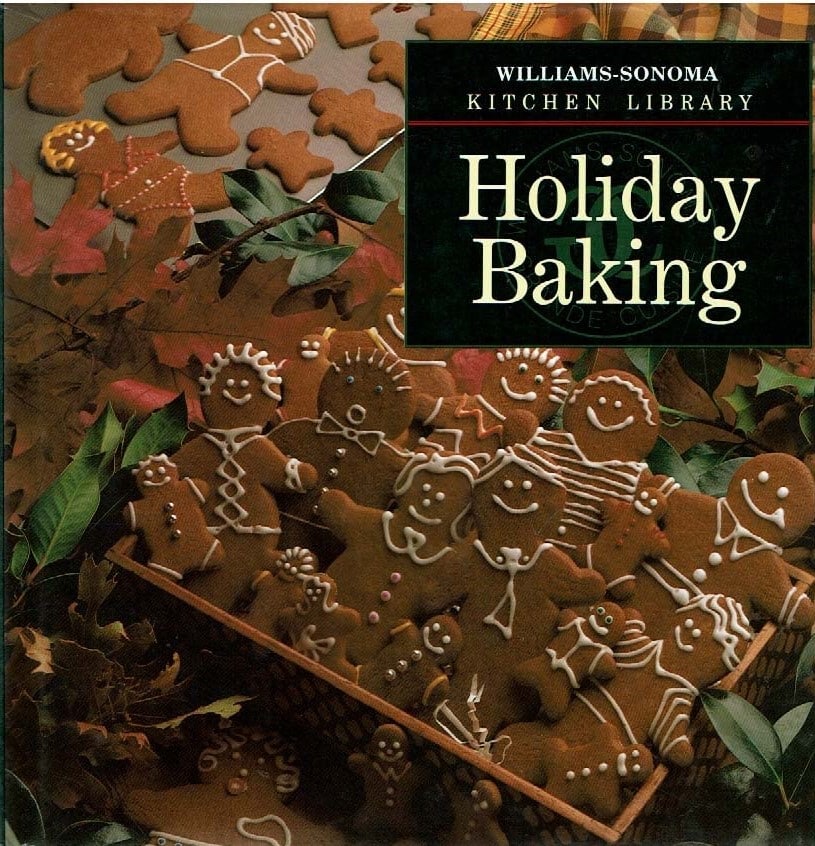


- Grilling (1992) by John P. Carroll and Chuck Williams (Amazon) (eBay)
- Hors D’Oeuvres & Appetizers (1992) by the Scotto Sisters (Amazon) (eBay)
- Pies and Tarts (1992) by John Phillip Carroll (Amazon) (eBay)
- Pasta (1992) by Lorenza De’ Medici and Chuck Williams (Amazon) (eBay)
- Chicken (1993) by Emalee Chapman (Amazon) (eBay)
- Chocolate (1993) by Lora Brody (Amazon) (eBay)
- Soups (1993) by Norman Kolpas (Amazon) (eBay)
- Vegetables (1993) by Chuck Williams (Amazon) (eBay)
- Chuck Williams’ Thanksgiving and Christmas (1993) by Chuck Williams (Amazon) (eBay)
- Salads (1993) by Emanuela Stucchi Prinetti (Amazon) (eBay)
- Muffins & Quick Breads (1993) by John Phillip Carroll (Amazon) (eBay)
- Pizza (1993) by Lorenza De’ Medici (Amazon) (eBay)
- Mexican Favorites (1994) by by Susanna Palazuelos (Amazon) (eBay)
- Potatoes (1994) by Diane Rossen Worthington (Amazon) (eBay)
- Gifts from the Kitchen (1994) by Kristine Kidd (Amazon) (eBay)
- Pasta Sauces (1994) by Emanuela Stucchi Prinetti (Amazon) (eBay)
- Stir Fry (1994) by Diane Rossen Worthington (Amazon) (eBay)
- Cookies & Biscotti (1994) by Kristine Kidd (Amazon) (eBay)
- Cakes, Cupcakes, and Cheesecakes (1995) by Sarah Tenaglia (Amazon) (eBay)
- Fruit Desserts (1995) by Lora Brody (Amazon) (eBay)
- Holiday Baking (1995) by Jeanne T. Kelley (Amazon) (eBay)
- Shellfish (1995) by Joanne Weir (Amazon) (eBay)
- Stews (1995) by Lora Brody (Amazon) (eBay)
- Breads (1996) by Jacqueline Mallorca (Amazon) (eBay)
- Cooking Basics: Recipes and Techniques (1996) by Jacqueline Mallorca (Amazon) (eBay)
- Holiday Entertaining (1996) by (editor) Chuck Williams (Amazon) (eBay)
- Ice Cream and Sorbets (1996) by Sarah Tenaglia (Amazon) (eBay)
- Healthy Cooking (1997) by John Carroll (Amazon) (eBay)
- Thanksgiving: Festive Recipes for the Holiday Table (1997) by Kristine Kidd (Amazon) (eBay)
- Breakfasts and Brunches (1997) by Norman Kolpas (Amazon) (eBay)
- Mediterranean Cooking (1997) by Joyce Esersky Goldstein (Amazon) (eBay)
- Outdoor Cooking (1997) by John Phillip Carroll (Amazon) (eBay)
- Casual Entertaining (1998) by Joyce Goldstein (Amazon) (eBay)
- Kid’s Cookies: Recipes for Bakers Ages 9 to 13 (1998) by Susan Manlin Katzman (Amazon) (eBay)
- Risotto (1998) by Kristine Kidd (Amazon) (eBay)
- Beef (1999) by Joyce Goldstein (Amazon) (eBay)
- Festive Entertaining: Collected Recipes from Williams-Sonoma (1999) by Joyce Goldstein (Amazon) (eBay)
- Vegetarian (1999) by Joanne Weir (Amazon) (eBay)
- On the Side (1999) by Joyce Goldstein (Amazon) (eBay)
- Beans and Rice (1999) by Joanne Weir (Amazon) (eBay)
- Pork and Lamb (1999) by Joanne Weir (Amazon) (eBay)
- Fish (1999) by Joyce Esersky Goldstein (Amazon) (eBay)
- Ice Cream and Sorbets (1999) by Sarah Tenaglia (Amazon) (eBay)
Williams-Sonoma Basics Collection


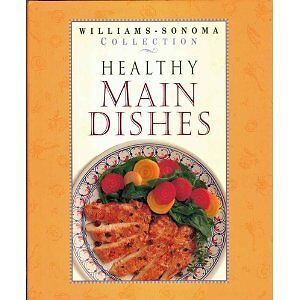
- Health Desserts (1995) by Cynthia Hizer and Chuck Williams (Amazon) (eBay)
- Healthy Side Dishes (1995) by Diane Rossen Worthington and Chuck Williams (Amazon) (eBay)
- Healthy First Courses (1995) by Diane Rossen Worthington and Chuck Williams (Amazon) (eBay)
- Healthy Main Dishes (1995) by Cynthia Hizer and Chuck Williams (Amazon) (eBay)
- Williams Sonoma Basics Collection: Four Books Set (1995) by Authors Listed Above (Amazon) (eBay)
Williams-Sonoma Lifestyles
- Holiday Celebrations (1998) by Marie Simmons and Chuck Williams (Amazon) (eBay)
- Fresh & Light (1998) by Lane Crowther and Chuck Williams (Amazon) (eBay)
- Casual Outdoor Dining (1998) by Georgeanne Brenna and Chuck Williams (Amazon) (eBay)
- Chicken for Dinner (1998) by Heidi H. Cusick and Chuck Williams (Amazon) (eBay)
- Classic Pasta at Home (1998) by Janet Kessel Fletcher and Chuck Williams (Amazon) (eBay)
- Everyday Roasting (1998) by Janeen A. Sarlin and Chuck Williams (Amazon) (eBay)
- Soup For Supper (1998) by Joyce Goldstein and Chuck Williams (Amazon) (eBay)
- Vegetarian for All Seasons (1998) by Pamela Sheldon Johns and Chuck Williams (Amazon) (eBay)
- After Dinner (1998) by Kristine Kidd and Chuck Williams (Amazon) (eBay)
- Brunch Entertaining (1999) by Janeen Sarlin and Chuck Williams (Amazon) (eBay)
- Cooking for Yourself (1999) by Janet Fletcher and Chuck Williams (Amazon) (eBay)
- Cooking from the Farmers Market (1999) by Georgeanne Brennan and Chuck Williams (Amazon) (eBay)
- Food & Wine Pairing (1999) by Joyce Goldstein and Chuck Williams (Amazon) (eBay)
- Holiday Cooking with Kids (1999) by Susan Manlin Katzman and Chuck Williams (Amazon) (eBay)
- Small Plates (1999) by Joanne Weir and Chuck Williams (Amazon) (eBay)
- Weekends with Friends (2000) by Chuck Williams and Betty Rosbottom (Amazon) (eBay)
The Best of the Lifestyle Series
- Appetizers (2007) by Chuck Williams (Amazon) (eBay)
- Special Occasions (2007) by Chuck Williams (Amazon) (eBay)
- Casual Entertaining (2007) by Richard Eskite (Amazon) (eBay)
- Grilling & Roasting (2007) by Chuck Williams (Amazon) (eBay)
Williams Sonoma Collection
- Williams Sonoma Collection Boxed Set: (Amazon) (eBay)
- Hors D’Oeuvre (2001) by Brigit Legere Binns, Noel Barnhurst, and Chuck Williams (Amazon) (eBay)
- Chicken (2001) by Rick Rodgers and Chuck Williams (Amazon) (eBay)
- Pasta (2001) by Erica De Mane (Amazon) (eBay)
- Soup (2001) by Diane Rossen Worthington (Amazon) (eBay)
- Thanksgiving (2001) by Michael McLaughlin (Amazon) (eBay)
- Fish (2002) by Shirley King (Amazon) (eBay)
- Vegetable (2002) by Marlena Spieler (Amazon) (eBay)
- Potato (2002) by Selma Brown Morrow (Amazon) (eBay)
- Roasting (2002) by Barbara Grunes and Chuck Williams (Amazon) (eBay)
- Dessert (2002) by Abigail Johnson Dodge (Amazon) (eBay)
- Breads (2002) by Beth Hensperger (Amazon) (eBay)
- Risotto (2002) by Pamela Sheldon Johns and Chuck Williams (Amazon) (eBay)
- Grilling (2002) by Denis Kelly (Amazon) (eBay)
- Salad (2002) by Georgeanne Brennan (Amazon) (eBay)
- Ice Cream (2003) by Mary Goodbody and Chuck Williams (Amazon) (eBay)
- Breakfast (2003) by Chuck Williams (Amazon) (eBay)
- Pies and Tarts (2003) by Carolyn Beth Weil and Chuck Williams (Amazon) (eBay)
- Cake (2003) by Fran Gage and Chuck Williams (Amazon) (eBay)
- Cookies (2003) by Marie Simmons and Chuck Williams (Amazon) (eBay)
- Muffins (2003) by Beth Hensperger (Amazon) (eBay)
- Sauces (2004) by Brigit Binns (Amazon) (eBay)
- Mexican (2004) by Marilyn Tausend and Chuck Williams (Amazon) (eBay)
- Asian (2004) by Farina Wong Kingsley (Amazon) (eBay) Italian (2004) by Pamela Sheldon Johns (Amazon) (eBay)
- Steak & Chop (2004) by Denis Kelly (Amazon) (eBay)
- Soup & Stew (2004) by Diane Rossen Worthington and Chuck Williams (Amazon) (eBay)
- French (2004) by Diane Rossen Worthington (Amazon) (eBay)
- American (2004) by Rick Rodgers and Chuck Williams (Amazon) (eBay)
- Seafood (2005) by Carolyn Miller and Chuck Williams (Amazon) (eBay)
- Fruit Dessert (2005) by Carolyn Beth Weil and Chuck Williams (Amazon) (eBay)
Authentic Recipes Celebrating the Foods of the World
- Barcelona: Authentic Recipes Celebrating The Foods Of The World (2004) by Paul Richardson (Amazon) (eBay)
- Paris: Authentic Recipes Celebrating The Foods Of The World (2004) by Marlena Spieler (Amazon) (eBay)
- San Francisco: Authentic Recipes Celebrating The Foods Of The World (2005) by Janet Fletcher (Amazon) (eBay)
- Florence: Authentic Recipes Celebrating The Foods Of The World (2005) by Lori De Mori (Amazon) (eBay)
- New Orleans: Authentic Recipes Celebrating The Foods Of The World (2005) by Constance Snow (Amazon) (eBay)
- New York: Authentic Recipes Celebrating The Foods Of The World (2005) by Carolyn Carreño (Amazon) (eBay)
- London: Authentic Recipes Celebrating The Foods Of The World (2006) by Sybil Kapoor (Amazon) (eBay)
The Best of the Kitchen Library
- Meats and Poultry (2004) by Chuck Williams (Amazon) (eBay)
- Soups, Salads & Starters (2004) by Chuck Williams (Amazon) (eBay)
- Italian Favorites (2004) by Chuck Williams (Amazon) (eBay)
- Holiday Favorites (2005) by Chuck Williams (Amazon) (eBay)
- Vegetarian (2005) by Williams-Sonoma and Chuck Williams (Amazon) (eBay)
- Baking (2005) by Chuck Williams and Williams-Sonoma (Amazon) (eBay)
- Desserts (2005) by Williams-Sonoma and Chuck Williams (Amazon) (eBay)
The Savoring Series
- Savoring Italy (1999) by Michele Scicolone (Amazon) (eBay)
- Savoring Spain & Portugal: Recipes and Reflections on Iberian Cooking (1999) by Joyce Goldstein (Amazon) (eBay)
- Savoring Southeast Asia (2000) by Joyce Jue (Amazon) (eBay)
- Savoring Mexico: Recipes and Reflections on Mexican Cooking (2001) by Lori De Mori (Amazon) (eBay)
- Savoring Tuscany: (2001) by Lori De Mori (Amazon) (eBay)
- Savoring America (2002) by (Amazon) (eBay)
- Savoring India (2002) by Julie Sahni (Amazon) (eBay)
- Savoring China: (2003) by Jacki Passmore (Amazon) (eBay)
- Savoring Desserts: Best Recipes From the Award-Winning International Cookbooks (2005) by Georgeanne Brennan (Amazon) (eBay)
- Savoring Provence: Recipes and Reflections on Provençal Cooking (2005) by Diane Holuigue (Amazon) (eBay)
- Savoring France (2006) by Georgeanne Brennan (Amazon) (eBay)
- Savoring: Appetizers (2006) Best Recipes from the Award-Winning International Cookbooks (Amazon) (eBay)
- Savoring Soups & Salads: Best Recipes from the Award-Winning International Cookbooks (2006) by Georgeanne Brennan (Amazon) (eBay)
- Savoring Pasta & Rice: Best Recipes from the Award-Winning International Cookbooks (2006) by Georgeanne Brennan (Amazon) (eBay)
- Savoring: Fish and Shellfish: Best Recipes from the Award-Winning International Cookbooks (2007) by Georgeanne Brennan (Amazon) (eBay)
Chuck Williams Collection
- Simple American Cooking (1995) by Chuck Williams (Amazon) (eBay)
- Simple French Cooking (1996) by Chuck Williams (Amazon) (eBay)
- Simple Italian Cooking (1999) by Chuck Williams (Amazon) (eBay)
- Simple Classics Cookbook: The Best of Simple Italian, French & American Cooking (2000) by Chuck Williams (Amazon) (eBay)
Williams Sonoma Complete Cookbooks
- Complete Entertaining Cookbook: The Best of Festive and Casual Occasions (1998) by Joyce Esersky Goldstein and Chuck Williams (Amazon) (eBay)
- Complete Seasonal Cookbook: Year Round Cooking with Fresh Ingredients (2000) by Joanne Weir (Amazon) (eBay)
- Complete Grilling Cookbook: The Best of Grilling and Outdoor Cooking (2001) by Chuck Williams (Amazon) (eBay)
- Complete Pasta Cookbook: The Best of the Pasta Collection (2002) by Michele Anna Jordan (Amazon) (eBay)
- Complete Outdoor Living Cookbook: The Best of the Outdoor Collection (2002) Edited by Chuck Williams (Amazon) (eBay)
Taste Cookbooks
- The Best of Taste: A Compilation of Inspired Recipes from the Williams-Sonoma Food and Travel Magazine (2001) Edited by Chuck Williams (Amazon) (eBay)
- Taste: Recipes for Entertaining (2002) by Andy Harris (Amazon) (eBay)
Williams Sonoma Entertaining Cookbook Series
- Williams-Sonoma Casual Occasions Cookbook (1995) by Chuck Williams and Joyce Goldstein (Amazon)* (eBay) — *Amazon image is incorrect, but the product info is spot-on.
- Williams-Sonoma Festive Occasions Cookbook (2004) by Chuck Williams and Joyce Goldstein (Amazon) (eBay)
New American Cooking Series
- Williams-Sonoma New England (2000) by Molly Stevens (Amazon) (eBay)
- Williams-Sonoma The Pacific Northwest (2000) by Jean Galton (Amazon) (eBay)
- Williams-Sonoma South (2000) by Ray L. Overton (Amazon) (eBay)
- Williams-Sonoma California (2000) by Janet K. Fletcher (Amazon) (eBay)
- Williams-Sonoma New American Cooking: The Best of Contemporary Regional Cuisines (2005) by Beth Dooley, Janet Fletcher, Jean Galton, Kathi Long, Ray Overton, Molly Stevens (Amazon) (eBay)
Williams-Sonoma Essentials Series
- The Williams-Sonoma Cookbook: The Essential Recipe Collection for Today’s Home (2008) by Chuck Williams (Amazon) (eBay)
- Essentials of Slow Cooking (2009) by Denis Kelly and Chuck Williams and Melanie Barnard and Charles Pierce (Amazon) (eBay)
- The Williams-Sonoma Baking Book: The Essential Recipe Collection for Today’s Home Baker (2010) by Chuck Williams (Amazon) (eBay)
- Williams-Sonoma Cooking at Home: The Essential Kitchen Companion (2010) by Chuck Williams and Kristine Kidd (Amazon) (eBay)










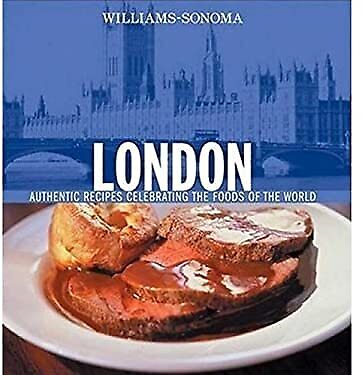




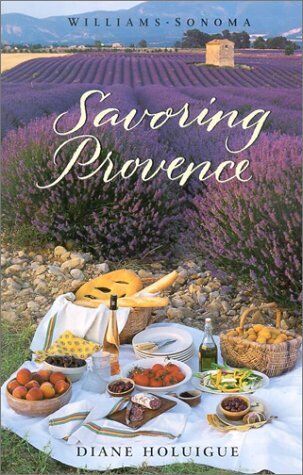
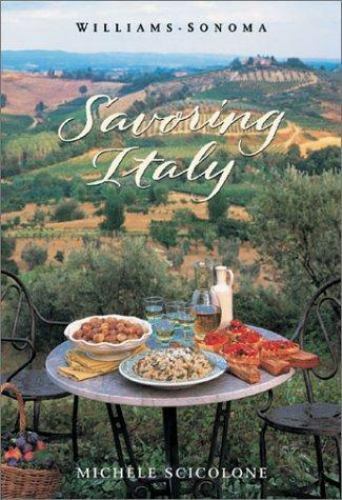

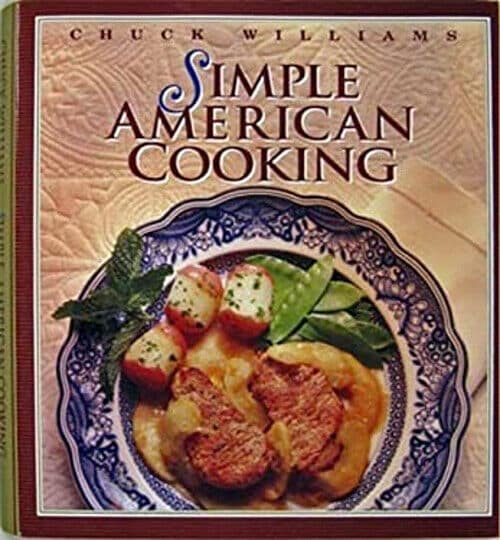



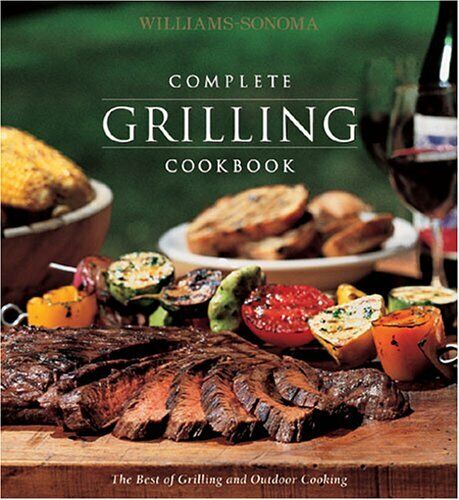








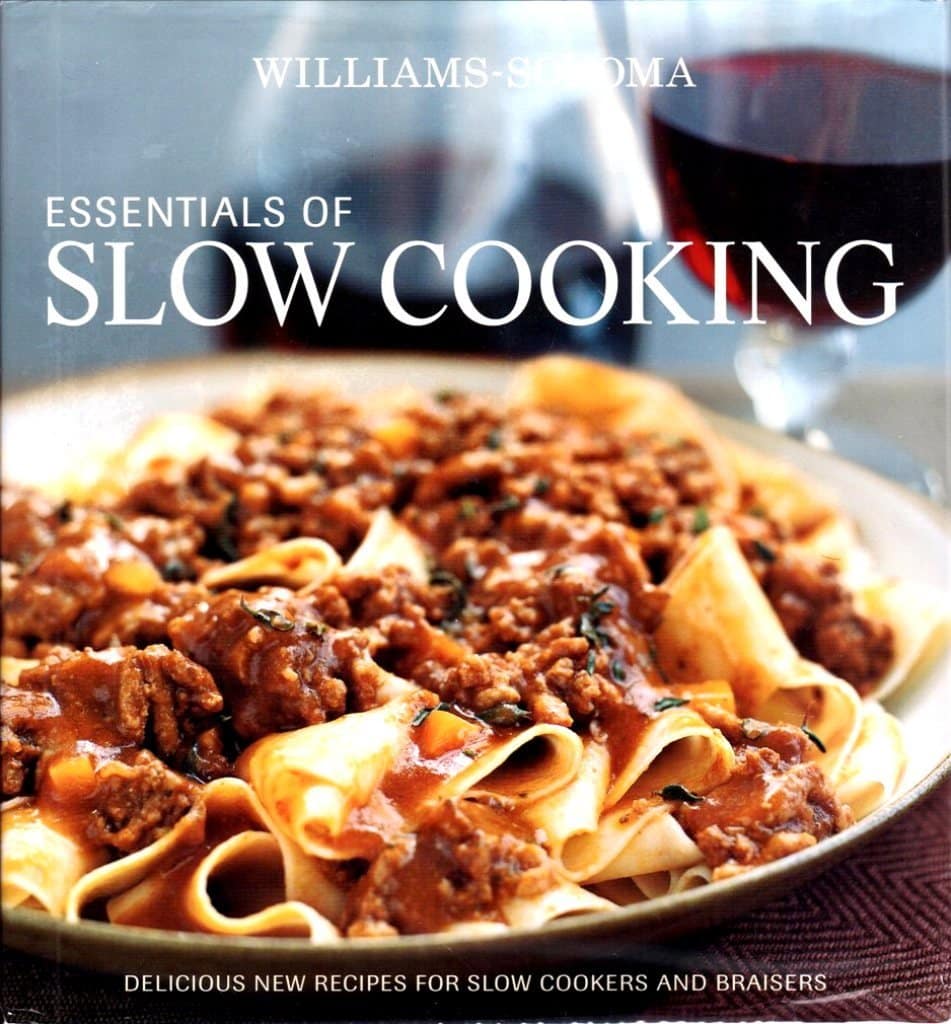


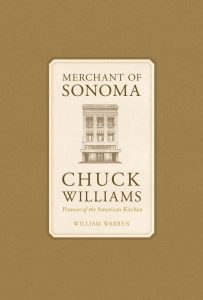

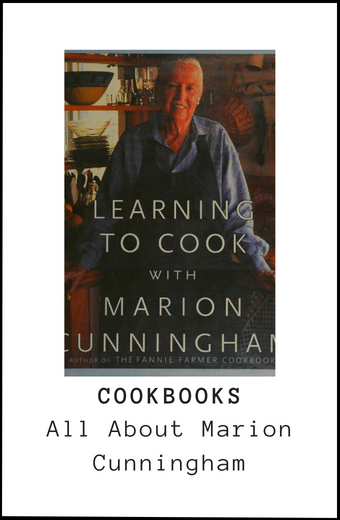

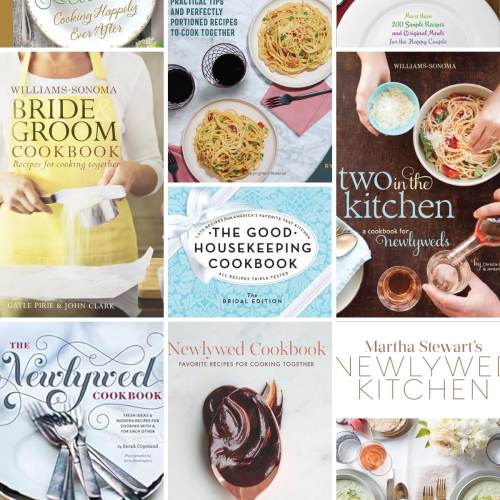
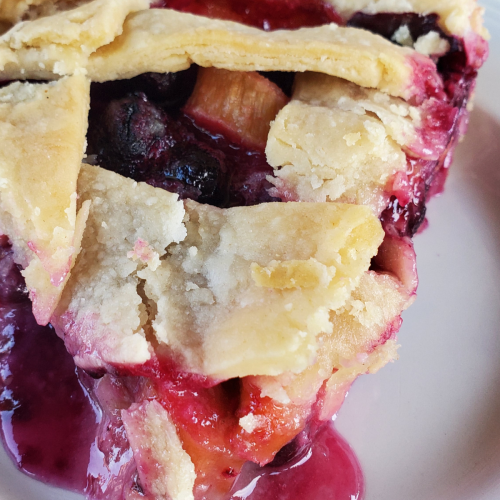
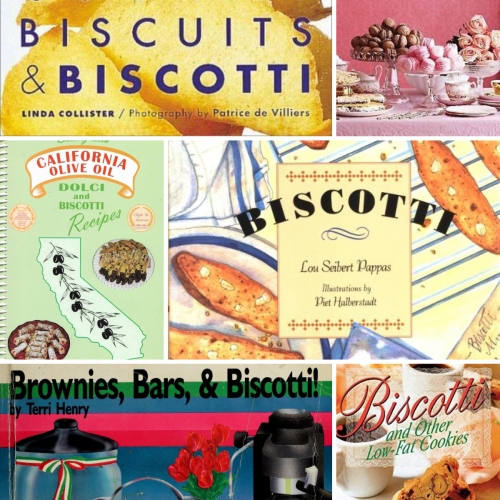
Leave a Reply